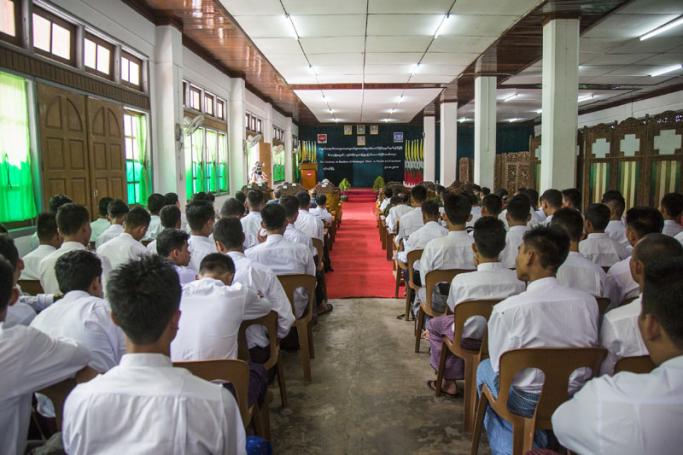UNICEF says the Myanmar government has released 75 children and young people who were recruited and used by the Armed Forces (also known as ‘Tatmadaw’), according to a report on August 31.
As the UN body says, this is the first discharge to take place in 2018, and it underlines the importance of protecting children in the context of armed conflict and within the peace process.
Since June 2012, when the Myanmar government signed a Joint Action Plan with the United Nations to prevent recruitment and use of children in the Tatmadaw, 924 children and young people have been released. The co-chairs of the UN Country Task Force on Monitoring and Reporting (CTFMR) on Grave Violations against Children: Knut Ostby, the United Nations Resident and Humanitarian Coordinator and June Kunugi, UNICEF Representative, welcome this latest discharge as ‘one more positive development in the Government’s effort to end and prevent the recruitment and use of children within the Tatmadaw’, according UNICEF.
The children and young people discharged will benefit from reintegration programmes to help them get back into civilian life, seize new opportunities for their own development and to contribute to bringing lasting peace in Myanmar as productive citizens of their country.
The CTFMR commends the Government for steps taken to reinforce age assessment procedures within the centralized military recruitment process and encourages the further roll out of this important prevention mechanism. Since the signature of the Joint Action Plan, other important actions have been taken: notably the signature of the Optional Protocol to the Convention on the Rights of Child on the involvement of children in armed conflict in 2015 (still requires ratification) and in 2017, the signature of the Paris Principles for the reintegration of children who have been associated with armed groups or forces, into civilian life.
The important role that the prevention of grave violations against children can play within the peace process was recently highlighted by the commitment made at the 3rd session of the Union Peace Conference (21st Century Panglong Conference) in July 2018 to set up and conduct programmes to ensure children’s rights and eliminate the six grave violations against children in line with the UN Convention on the Rights of the Child (CRC).
The CTFMR continues to work with the Government to end systematically and prevent the recruitment and use of children in the Myanmar Armed Forces in a sustainable manner. Remaining measures include strengthening accountability frameworks through new opportunities such as the expected upcoming adoption of the Child Rights Law, and systematically releasing suspected minors when they have no or inconsistent documentation to verify their age, in line with the principle of the “benefit of the doubt”.
During the recent visit of Ms Virginia Gamba, the Special Representative of the Secretary General on Children and Armed Conflict (SRSG CAAC) to Myanmar in May 2018, she met with high-level officials from relevant Government Ministries, the Tatmadaw, as well as representatives from three listed armed groups. She informed the Government on the CTFMR’s engagement to develop and sign joint commitments with the seven listed armed groups to end and prevent underage recruitment in their ranks and strengthen the protection of children. She also expressed her strong concerns over emerging trends of other grave violations of children’s rights in Myanmar such as killing and maiming and rape and other sexual violence against children, for which Tatmadaw has since been listed.
The CTFMR urges the Government to start working on measures to prevent and respond to those violations and expresses its commitment to support the Government in this process. The CTFMR remains committed to working closely with the Government in its efforts towards completion of the Joint Action Plan to sustainably end and prevent further recruitment and use of children by the Tatmadaw.












